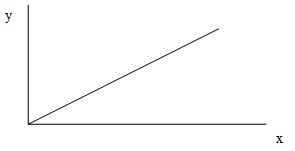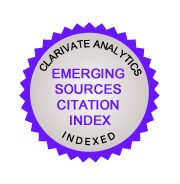Submissions
Submission Preparation Checklist
As part of the submission process, authors are required to check off their submission's compliance with all of the following items, and submissions may be returned to authors that do not adhere to these guidelines.- The submission of a paper implies that, if accepted for publication, it will not be published elsewhere in the same form, in any language, without the consent of the Publisher. By submitting the manuscript authors declare the agreement of all authors with the conditions in the copyright notice. Authors also declare that the submission has not been previously published, nor it is submitted to another journal for consideration (or an explanation has been provided in Comments to the Editor).
- The submission file is in Microsoft Word document file format (DOC of DOCX format).
- The text adheres to the stylistic and bibliographic requirements. The paper is carefully formatted according to the template of the journal (see below). Special attention is paid to the exact application of the Harvard referencing convention to both continuous citations and the list of references.
- Where available, URLs for the references have been provided.
- If a reference has a DOI number assigned, it will also be provided in the list of references.
- The core results, findings or conclusions of the paper are emphasized in 2-4 research highlights (bullet points - max. 250 characters per bullet point including spaces).
- Authors are required to suggest two experts appropriate for the evaluation of the paper. The experts should be outside the affiliation of the authors, outside the Czech University of Life Sciences Prague, and at the same time both experts should be from different affiliations. The reviewers are submitted into text fields in the submission form of the editorial system. Contact on suggested reviewers must not contain private emails.
- The blind review is ensured. Manuscript doesn't contain any information on names of author(s), affiliations, funding grants, etc. Authors' names, detailed affiliations and funding grants only occur in the description of the paper (in the editorial system).
Copyright Notice
Authors declare with this manuscript intended for publication to ERIES Journal that:
- all co-authors agree with the publication of the manuscript even after amendments arising from peer review;
- all co-authors agree with the posting of the full text of this work on the web page of ERIES Journal and to the inclusion of references in databases accessible on the internet;
- no results of other researchers were used in the submitted manuscript without their consent, proper citation, or acknowledgement of their cooperation or material provided;
- the results (or any part of them) used in the manuscript have not been sent for publication to any other journal nor have they already been published (or if so, that the relevant works are cited in this manuscript);
- submission of the manuscript for publication was completed in accordance with the publishing regulations pertaining to place of work;
- experiments performed comply with current laws and written consent of the Scientific Ethics Committee / National Animal Care Authority (as is mentioned in the manuscript submitted);
- grant holders confirm that they have been informed of the submitted manuscript and they agree to its publication.
Authors retain copyright and grant ERIES Journal right of first publication with the work simultaneously licensed under a Creative Commons Attribution License that allows others to share the published work with an acknowledgement of its initial publication in ERIES Journal. Moreover, authors are able to post the published work in an institutional repository with an acknowledgement of its initial publication in ERIES Journal. In addition, authors are permitted and encouraged to post the published work online (e.g. institutional repositories or on their website) as it can lead to productive exchanges, as well as earlier and greater citation of published work.
Privacy Statement
Personal data of the subject will be processed in order to publish a scientific publication in the Journal on Efficiency and Responsibility in Education and Science. The data subject hereby declares that he/she understands the principles of data processing by the data controller (Czech University of Life Sciences Prague), the conditions of personal data processing and also the rights that he/she can apply to the data controller. Detail information is available at the web of the data controller: https://gdpr.czu.cz/en/r-17362-general-rules . The data controller has fulfilled it's obligation to the subject according to the Article 13 of the General Data Protection Regulation (GDPR).
The names and email addresses entered in this journal site will be used exclusively for the stated purposes of this journal and will not be made available for any other purpose or to any other party.







